Y Filltir Sgwâr/The Square Mile: A homage to heather
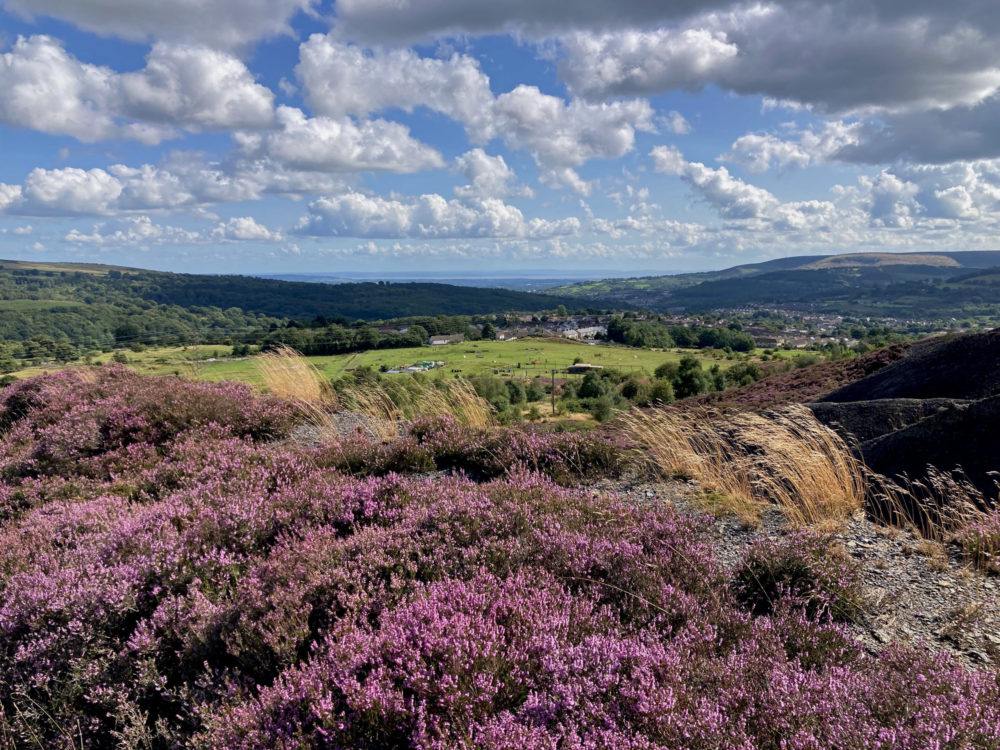
In a year long series Tom Maloney, from Abersychan, shows how you can love a place so well it becomes a part of you.
It’s surprising how we see things. Sometimes, perhaps even more than sometimes with places and things that are so familiar to us, the more we see something, paradoxically the less we see, until there are magical, eureka moments when our eyes are opened.
It’s not that the familiarity breeds contempt, I think it is because in knowing something well there is a danger that you can forget to take another, closer look and appreciate qualities that may otherwise go unnoticed.
Heather is one of those plants that we all admire at this time of the year. It has a humble majesty that sits so well in a grand panorama, but there is so much more to this plant than its joyous colour.
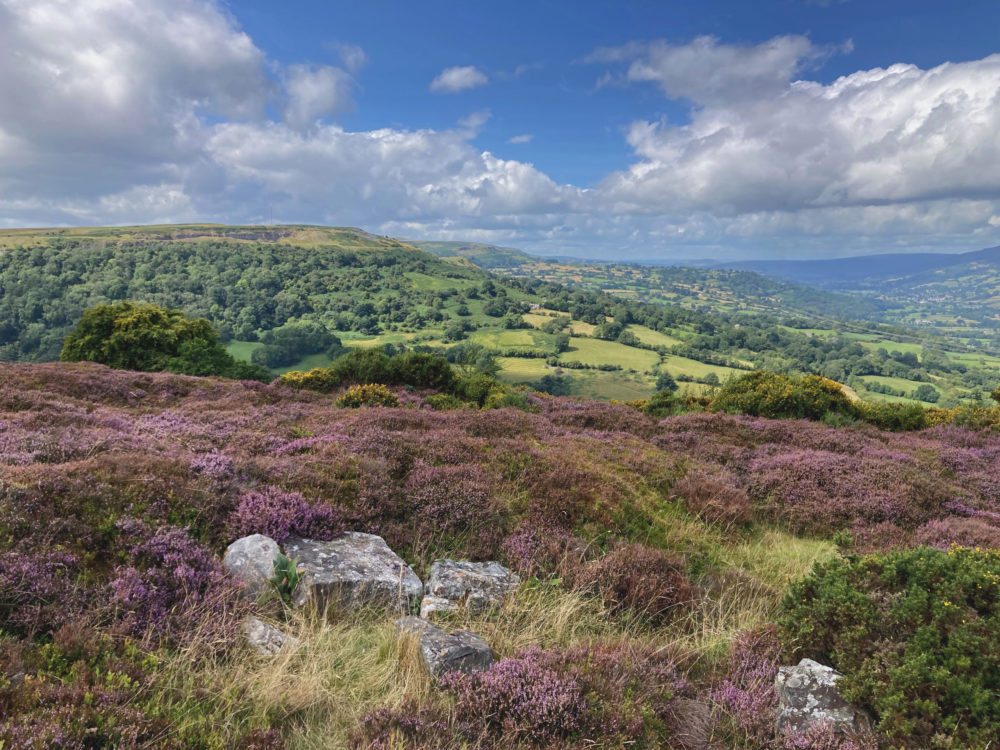
Walking where the heather blankets the colliery spoil with its dainty little flowers softening the scars of an industrial past my thoughts turned to this wonderful plant and I have to confess that I have been on a learning curve over the past couple of weeks.
There really is no denying its beauty. It’s almost like nature uses the plant like a thread to stitch a tapestry that would grace a Tudor palace magnificently.
And … what a tapestry of colour there is just now of vibrant purple pinks, rust orange and burnt umber and where the flowers have passed the silver grey sculptural, entwined stems remain.
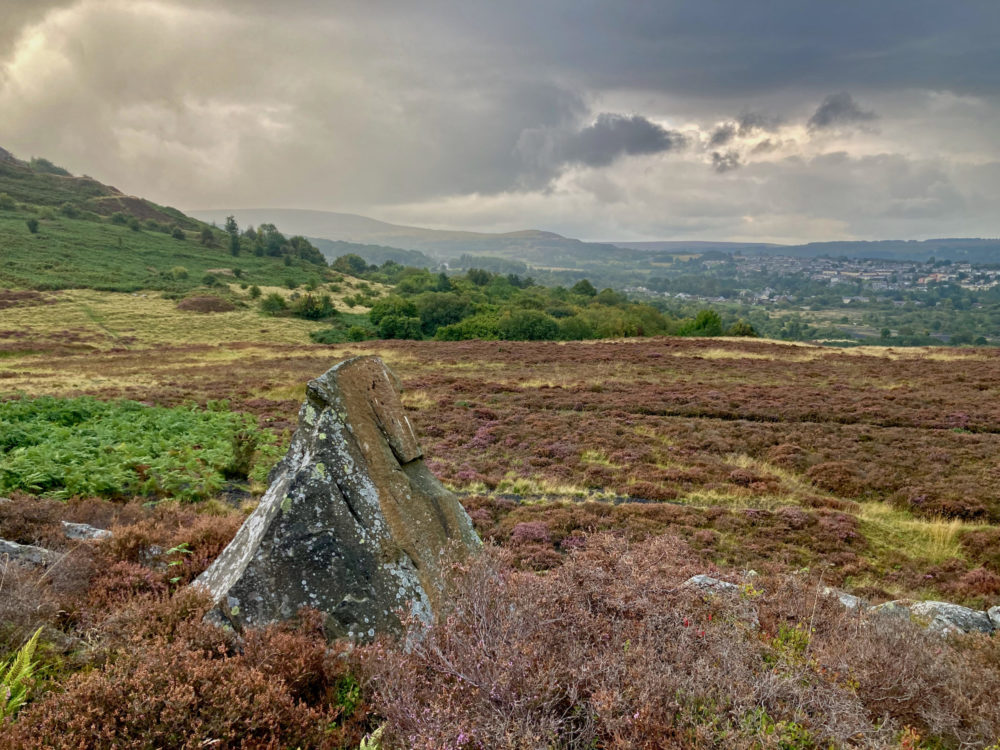
Names
As with so many plants heather goes by other names as well. In the Welsh it goes by the name ‘Grug’, while its scientific name is ‘Calluna vulgaris’.
Lena Wegner, writing for the Sammamish Botanical Garden Society, what an impressive name that is, points to the background behind the scientific name – ‘Calluna vulgaris. The name calluna is derived from the Greek word “kallunein”, which means to sweep or cleanse, and refers either to the fact that calluna was used to make brooms or that it was used in medicine to “cleanse” the body.’
If you are wondering about ‘vulgaris’, this is just a lovely way to say ‘common’!
‘Ling’ is another alternative for heather that is quite new to me.
James Duncan, Learning and Engagement Officer for the Sussex Wildlife Trust, gives an interesting explanation that goes back in time once again –
‘Common Heather (Calluna vulgaris) is also … known as ‘Ling’. Its alternative name derives from the Old English word ‘lig’ meaning ‘fire’ which only serves to emphasise its vital importance as a past source of fuel.’
He also warned – ‘It’s propensity for burning means that heathland fires can prove devastating and quickly spread out of control.’

Magic
It is a common enough plant that is for sure and most sources highlight how well it grows on heaths, moors and around bogs, but I think the magic of this plant for me is that it is able to thrive in what might seem to be the most unlikely of places at first sight.
A plant that grows in abundance on coal tips has to deserve respect.
It has truly transformed the legacy of mining locally. How bleak and stark the blue, black mounds would be without this beautiful and most resilient plant.
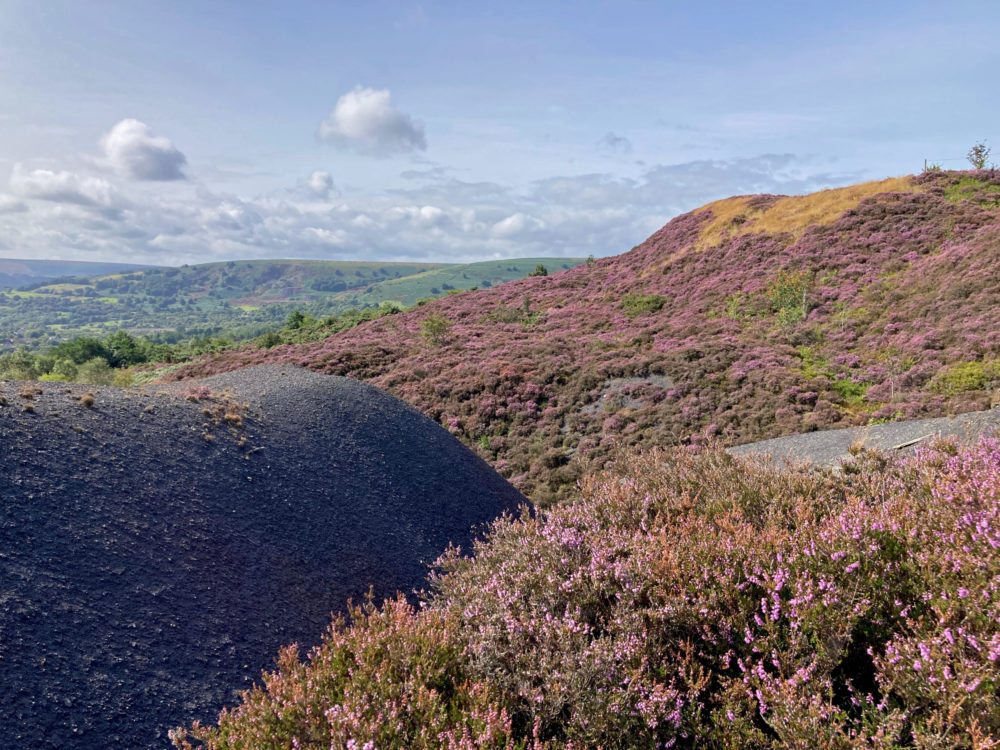
Vigorous
These former colliery landscapes inevitably ask questions of you and make you wonder. On a recent walk at the Varteg I stopped for some time wondering why it was that the heather was so vigorous in its growth in some places, whilst in others the colliery waste looked just like the day that it was first discarded.
This was a question I posed on my Twitter account – I still cannot quite get used to its other name and I have to admit that I miss the little bird!
The internet can be a funny place to inhabit at times, but I do believe that on the whole it is an excellent way to connect with others, there are so many kind people out there. I received a comprehensive response from Steve Williams @ValleyNature – “The extent of vegetation colonising coal spoil will vary depending on aspect, shade, steepness of slope, erosion, chemical composition etc. Bare ground is an important ecological component of a Wales priority habitat called Open Mosaic Habitat on Previously Developed Land.”
I have heard of open mosaic habitat, but felt sufficiently insecure in my understanding to carry out a little additional research. The charity ‘Buglife’ which is dedicated to the conservation of all invertebrates highlights just how valuable these sites are.
‘Open mosaic habitat on brownfield sites can be extremely diverse … including such wide ranging sites as railway sidings, quarries, former industrial works, slag heap, bings and brick pits … supporting a wide range of terrestrial and aquatic habitats. This diversity has made them increasingly important within ecological networks for rare and scarce invertebrates as well as lichens, plants, birds, reptiles and amphibians of conservation concern.’
I rather suspect that the worth of these old industrial sites often goes under the radar. Hopefully in time greater understanding of the wide scope of potential and opportunities to develop and protect these landscapes as nature reserves will take positive steps forward.
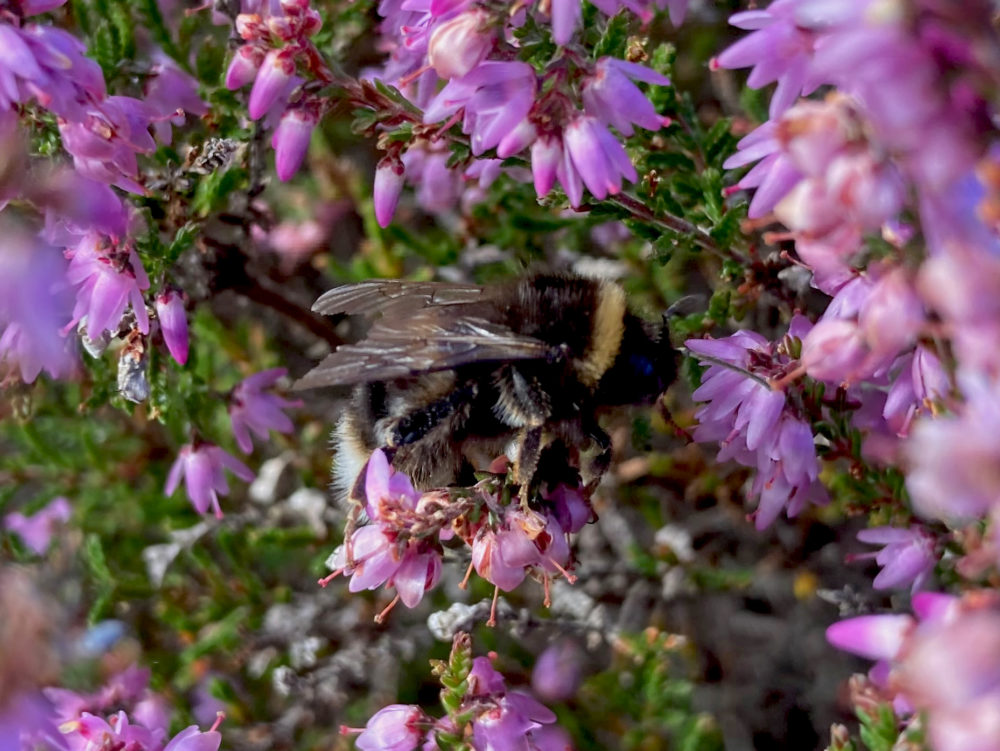
In the warmth of the sunshine earlier this week I stood for a little while watching and listening to the diligent activity of White-tailed bumblebees bobbing and buzzing around clumps of heather still rich in their purple pink blooms.
I felt my admiration grow for this wonderful plant to thrive and establish habitats along the coal tips.
It is never too late to learn something new and huge thanks to Steve Williams for pointing me to new understanding of the places that I love to walk. It is good to know that there can be a positive future outlook for places that were once so dominated by heavy industry.
With the numbers of pollinators, other invertebrates and birds so much in decline what a contribution these sites can and could make to reversing these trends.
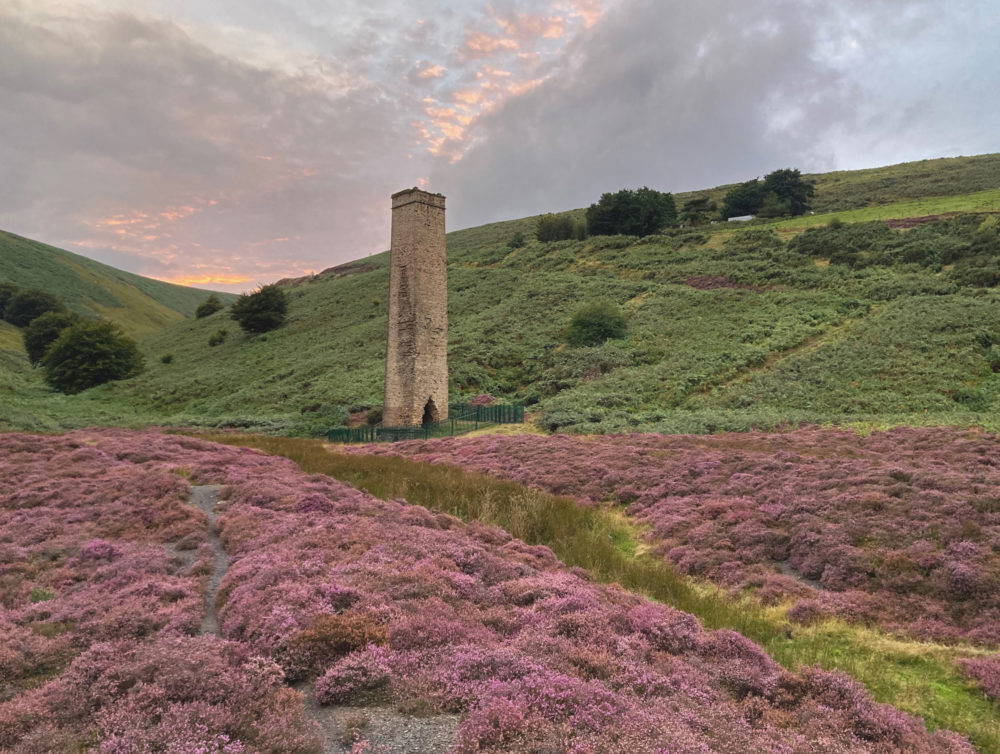
I revel in the catching of rich moments of colour and texture in the landscape. Sunsets are so fleeting at the best of times, to be enjoyed and savoured in their moment and to catch a sunset over a purple sea of heather at Cwmbyrgwm recently was exhilarating, but the real magic is the heather itself.
Homage to heather is richly deserved!
Support our Nation today
For the price of a cup of coffee a month you can help us create an independent, not-for-profit, national news service for the people of Wales, by the people of Wales.





Shwmae Tom, I walked the old railway line from Blaenafon to Pontypool yesterday (7/9/24) but as you’d know there was a very thick mist virtually the whole way down the route, so, not much chance to take in the views or have many glimpses of the flora & fauna as you pass through. The sight of vast areas covered in Heather on better days is always a joy & a sign of summer at it’s best & most vibrant. In your article you mention how Heather is resilient enough to settle on & make itself at home on the old… Read more »
Shwmae Alan, very much a pleasure to read your reply and to know that heather is also much in evidence on the colliery waste in the Cwmbran area. It is incredible really just how much it has transformed these areas. I am sure that some scientific survey work around heather must have been carried out in the past and it would be interesting to know more. I am so glad you mentioned about ‘All Things Bright And Beautiful’, it’s a lovely connection. Diolch yn fawr iawn Tom